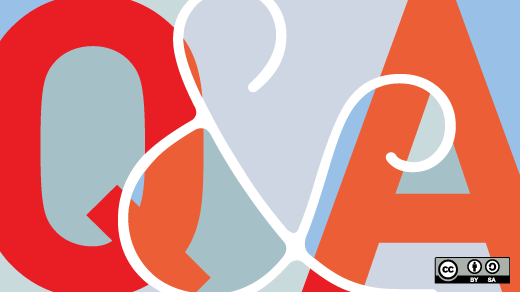The interview below, with Scott Lundstrom, group vice president for IDC Health Insights, first appeared as a video presentation. To help guide healthcare organizations as they consider going forward with open source software, Red Hat, Inc. posed the following questions to Scott.
Q: What healthcare industry trends are removing costs from organizations’ IT infrastructures?
Healthcare organizations face constant pressure to reduce costs and, like most organizations, they are typically looking for these cost-reduction opportunities within expensive IT infrastructures.
Certainly a general reduction in complexity would lower expenses. Healthcare technology is developed within federated, highly distributed, and usually very expensive systems. To reduce this complexity, healthcare organizations are trying to consolidate data and datacenters — and that opens up an opportunity to take advantage of the growth of Linux and open source technologies.
Virtualization, for example, is a natural solution for cost reduction. Organizations are finding they can securely host multiple services and materials on inexpensive commodity hardware. They’re replacing their proprietary hardware and their operating system at the same time, often re-hosting important legacy and homegrown applications within virtual machines on Linux and commodity hardware.
Of course, those cost savings can’t come at the expense of downtime, especially in the healthcare industry where lives depend on the reliability of mission-critical applications. And fortunately, as evidenced in the financial sector in recent years, reliability is one area where open source technologies have a lot to offer and have proven their capabilities.
There are also more conservative organizations, who still hesitate to make significant hardware changes. But they’re struggling to share and interpret data across their networks. They’re frustrated with being locked into one vendor’s application, and they’re worried about the long-term accessibility of data that’s coded in proprietary formats. We’re seeing those healthcare organizations turn to the data federation and open data standards found in the open source middleware stack.
Another trend we’re seeing is an interest in cloud computing. Harvard Medical School, for example, is using the Amazon Elastic Compute Cloud (EC2) for research work. A key area where I think we’re going to see cloud computing come heavily into play is in Electronic Health Records. Some industry leaders are saying that cloud computing may make the adoption of Electronic Health Records affordable for smaller organizations.
The cloud promises some big benefits: scalability, the potential for global collaboration, a pay-as-you-go model. And the cost savings are enormous. I think we’re going to see some really incredible things come out of cloud computing in a short time. Here again, we’re watching open source technology drive the industry. According to research, within the next few years about 90% of cloud computing will be powered by open source solutions.
Overall, healthcare organizations are looking to reduce complexity in the datacenter environment by consolidating datacenters and physical servers to lower their numbers. They’re also creating a more nimble, agile infrastructure by running virtual servers on that physical stack and moving out into the cloud. And several leaders in the industry are lowering their costs for both physical and virtual servers by moving to open source operating systems, applications, database management systems, and middleware.
For healthcare organizations, there are incredible cost-saving opportunities in the IT infrastructure area, all the way up and down the stack, plus the savings in time and needed staff.
Q: Beyond cost savings, what are the additional advantages to open source?
Obviously cost is a big consideration. But there are other benefits to open source that are significantly more substantial — and longer-lasting — than cost savings. As I mentioned earlier, open source software has the advantages of being reliable, flexible, and interoperable. Linux, for example, is extremely robust, and it’s typically much more open to advancements in technology or changes in your technology needs. It grows as you grow.
The rapid growth and ease of integration of virtualization are good examples of this. Virtualization became available for Linux much more quickly than it came to proprietary software. In addition, the standards and open development inherent in the open source process create software that works extremely well, in many environments, with many other applications. For healthcare organizations, that kind of interoperability is crucial.
One of the key messages you hear in business today is about architecture — or the “stack.” Everybody wants to know what your SOA — your Service-Oriented Architecture — is going to be like. Whether it’s your Web server or applications for business or data, all the pieces have to operate smoothly and affordably.
In the open source world, that happens because the software — or in this case, middleware — is built transparently, and developers and users share with each other to improve interoperability and functionality for everyone. Proprietary software is built by a very different process, where developers and vendors create silos of information that cannot easily be accessed by each other. Proprietary vendors often hesitate to work together, and this poses a problem when IT swaps out one part of the infrastructure for a new vendor’s solution.
For healthcare, integration of information is key, driving everything from patient care delivery to research to complying with regulatory authorities. Many of these processes are fed by heterogeneous sources of distributed information, and timely access to this information is a challenge.
There is open source technology that solves this problem. Data services applications integrate data from various dispersed systems, presenting a single, real-time view of patient-centric clinical data and consolidated business data that can increase the quality of patient care while decreasing costs.
Q: Are hospitals compromising reliability or security by using open source?
Not at all; McKesson Provider Technologies, Beth Israel Deaconess Medical Center in Boston, the Florida Hospital, all run on Linux. And we are seeing very large integrated delivery networks like Kaiser, the University of Pittsburgh Medical Center, Highmark (Blue Cross, Blue Shield), and United Health make significant investments in open source.
The healthcare leaders who have moved to open source solutions are experiencing uptimes of “four-nines” — 99.99% — or better. These organizations are migrating for the cost savings, but they’re staying for the quality, the reliability, and the improved operations. They are finding that support quality is on par with industry standards, if not higher. Support for things like integration, clustering, and virtualization is usually much better with open source software than with proprietary solutions.
Q: What would you suggest to healthcare organizations that are interested in moving forward with open source?
Every healthcare organization we work with is focused pretty heavily on reducing the cost of operations, lowering the cost of integration and compliance, and improving the quality and the reliability of their systems operation. Open source products can achieve all these goals.
I’d suggest that larger healthcare organizations start looking at pilots around server consolidation and virtualization. The savings available through the collapsing of physical infrastructure and the virtualization of servers are substantial — 25% to 30% of the cost of operations in the datacenter.
For smaller healthcare providers, Linux and open source software should be evaluated as part of an overall software-as-a-service strategy. For example, we’re increasingly finding that ambulatory physician practices and smaller operations are looking at vendors providing software as a service. In the electronic medical record space, we see eClinical Works providing a host of solutions running on Linux out of its seven datacenters to some 10,000 physicians.
Open source really offers something for every healthcare organization. The key is to get started and begin to build some capabilities and confidence. Over and over again, we see that healthcare organizations come to open source for cost, but continue to be impressed with the quality and the reliability of open source solutions.

Opensource.com
What to read next





Comments are closed.